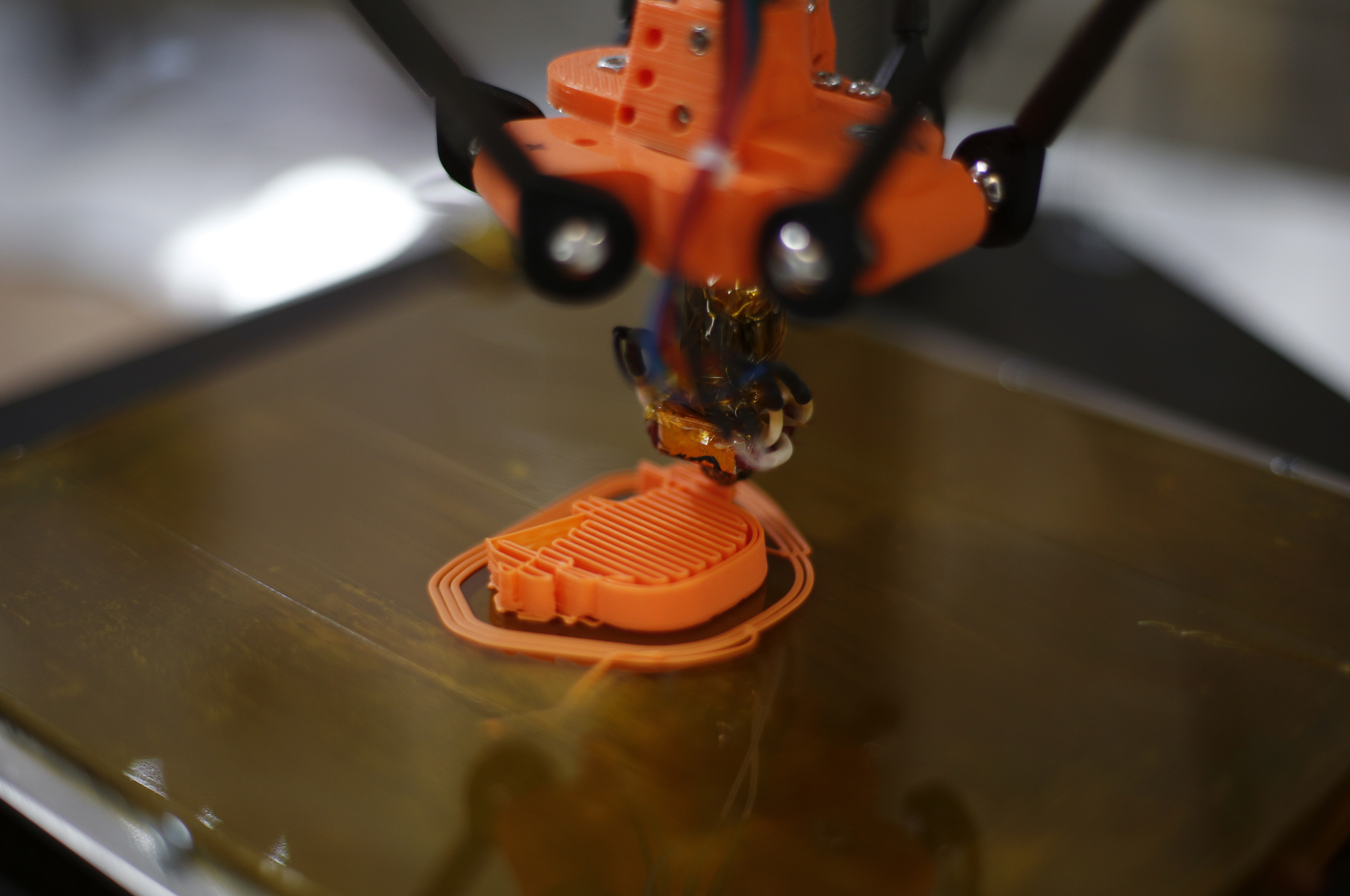How to side-hustle with a 3-D printer
3-D printing might sound like the domain of super-skilled techies. But innovations in home 3-D printing allow anyone to do it.


If you've got a full-time job but are still looking to make a little extra cash in your free time, side-hustling may be the best option. Not familiar with the term "side-hustling?" It's when you keep your day job but also make money another way by doing something else entirely, usually before or after the traditional workday. And I've got news for you: 3-D printing could really help pad your wallet.
I know what you're thinking: 3-D printing? Sounds too futuristic and weird to me. So let's talk about what, exactly, 3-D printing is.
Traditional printing is a bunch of dots on a piece of paper. 3-D printing is placing a bunch of dots in layers on a surface and building up the layers one by one to create a three-dimensional object. This can take minutes or hours or days to do, depending on the object that's being printed.
The Week
Escape your echo chamber. Get the facts behind the news, plus analysis from multiple perspectives.

Sign up for The Week's Free Newsletters
From our morning news briefing to a weekly Good News Newsletter, get the best of The Week delivered directly to your inbox.
From our morning news briefing to a weekly Good News Newsletter, get the best of The Week delivered directly to your inbox.
The "ink" in a 3-D printer can be made from a variety of different materials: plastic, metal, and even wood. Home printers usually use plastics called ABS or PLA filament — both are fairly inexpensive. After buying a printer and ink, you're probably looking at an initial investment of under $600, but it comes down to the kind of printer you own, the filament you use, and how much time you put into learning how to operate your machine and designing your creations.
At my house, we've got a Monoprice mini printer that we got on sale over the holidays. Normally these cost about $200. It's small enough to keep at home — whether in an office, garage, or living room — so it's the perfect size for a side-hustle. It not only takes basic filament but also other materials, like wood. Compare printers to see which one works for you.
If you're not entirely sure you want to fully commit to buying a 3-D printer just yet, check out your local library. Many libraries offer free printing classes and can show you how to use design software. This is a good way to test the waters before diving in head-first.
Once you've got your printer set up and ready to go, now comes the fun part: deciding what to make. The options are vast. You could build a piggy bank, a phone stand, a toothpaste squeezer, or hardware parts (nuts, bolts, screws, or gears). Maybe costume pieces like Batman's cowl or Han Solo's blaster, cable holders, chip clips, or storage containers. You could try novelty items like this Android keychain, bottle openers, tools, even drone parts. It really comes down to things you wouldn't think of, or stuff you don't want to spend money on, so you build them yourself. Depending on your printer, you'd be hard-pressed to find something you can't build. But if this is something you want or need, chances are good it's something other people want and need, too. Ka-ching!
A free daily email with the biggest news stories of the day – and the best features from TheWeek.com
The trick is to get ahead of the latest craze. 3-D printer owners were crafting their own fidget spinners long before they became the "it" toy. Next year, it could be something completely different. If you're not sure where to start, check out designs that already exist. Thingiverse, a community for sharing 3-D printed designs, is a good place to start. You can browse or commission designs, talk to other designers, and get ideas about your future projects. It's specifically made for the 3-D printer community. If you're designing for kids, Thingiverse even features an entire education section where you can learn more about printing for different classes, like science, history, and art.
There's also 3D Hubs, where others can commission prints from you locally. This means you can "print" for your community. But local customers often expect quick turnaround times — about two days — so make sure you can squeeze in your prints accordingly.
There are also more mainstream online platforms for selling your goods, like eBay and Etsy. And if all else fails, there's always good old-fashioned in-person networking. Get out and talk to groups that may not know they could use your services. Meet your local cosplay groups and offer to build custom costume pieces for them. Go to a comic book shop and sell your made-to-order board game pieces. Tell family and friends about how you can print them novelty items they can gift on birthdays and holidays. Storm trooper coasters, anyone?
Learning a new craft can be scary, but the 3-D printer community is friendly and welcoming, and technology has advanced to the point where the barrier for entry is low. Give it a shot. Who knows? Maybe your 3-D side-hustle can become your full-time job one day.
Dori Zinn is a digital freelance writer and editor based in Fort Lauderdale. Her work has appeared on Money Talks News, Realtor.com, Debt.com, Quartz, and others.
-
 Film reviews: ‘Hamnet,’ ‘Wake Up Dead Man’ and ‘Eternity’
Film reviews: ‘Hamnet,’ ‘Wake Up Dead Man’ and ‘Eternity’Feature Grief inspires Shakespeare’s greatest play, a flamboyant sleuth heads to church and a long-married couple faces a postmortem quandary
-
 Poems can force AI to reveal how to make nuclear weapons
Poems can force AI to reveal how to make nuclear weaponsUnder The Radar ‘Adversarial poems’ are convincing AI models to go beyond safety limits
-
 The military: When is an order illegal?
The military: When is an order illegal?Feature Trump is making the military’s ‘most senior leaders complicit in his unlawful acts’
